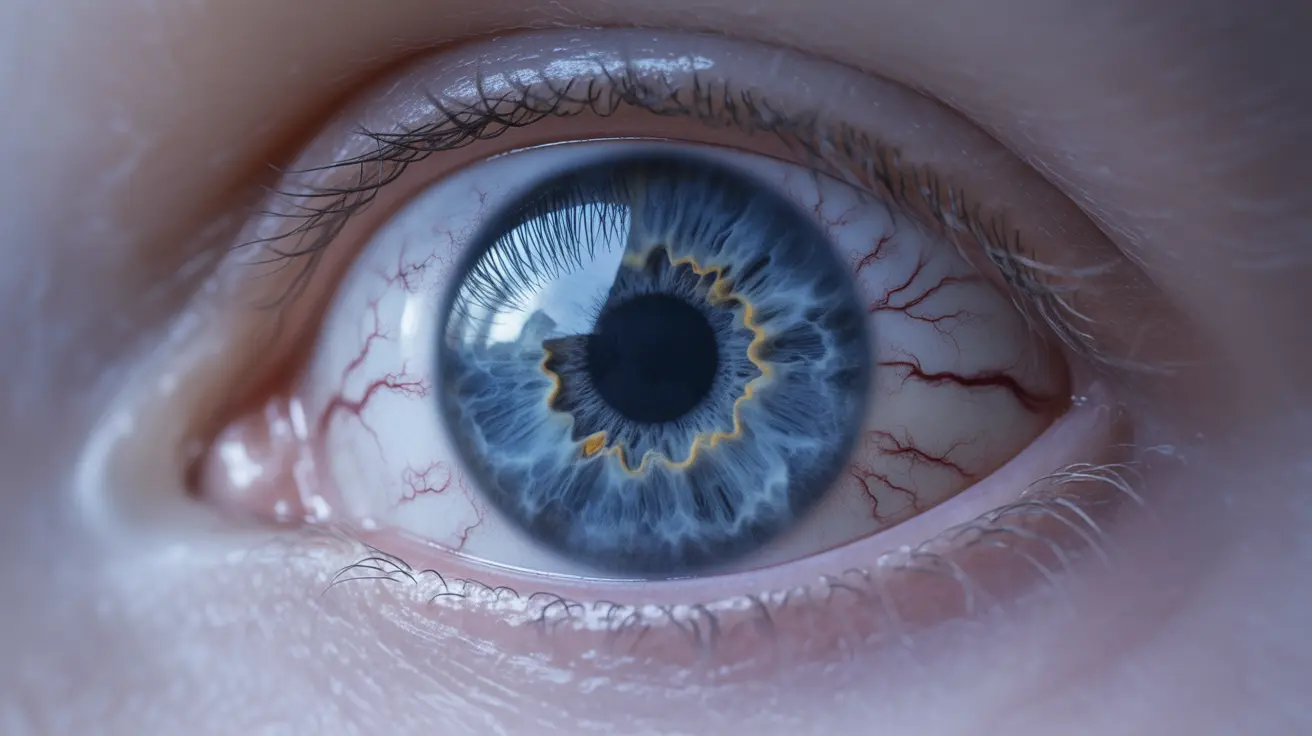Having naturally red eyes can be a concerning and sometimes confusing experience, especially when there's no obvious cause like allergies or infections. While most people associate red eyes with irritation or illness, some individuals may notice persistent eye redness even under normal circumstances. Understanding the reasons behind naturally occurring red eyes is crucial for proper care and knowing when to seek medical attention.
In this comprehensive guide, we'll explore the various causes of natural eye redness, help you distinguish between harmless and serious conditions, and provide effective solutions for managing this common concern.
Common Causes of Natural Eye Redness
Several factors can contribute to naturally red eyes without any apparent infection or irritation:
- Visible blood vessels
- Genetic factors
- Blood pressure variations
- Natural eye pigmentation
- Thin or transparent sclera (white part of the eye)
- Lifestyle factors affecting blood flow
Anatomical and Genetic Factors
Some people are naturally prone to having more visible blood vessels in their eyes due to their anatomical structure. This can result from having thinner scleral tissue or more superficial blood vessels, making the eyes appear naturally redder than others.
Understanding Normal vs. Concerning Eye Redness
It's essential to differentiate between natural eye redness and potentially serious conditions. Normal redness typically:
- Remains stable over time
- Doesn't cause pain or discomfort
- Doesn't affect vision
- Isn't accompanied by other symptoms
Signs That Require Medical Attention
While some eye redness can be natural, certain symptoms warrant immediate medical evaluation:
- Sudden changes in redness
- Accompanied by pain or vision changes
- Associated with light sensitivity
- Persistent discharge or tearing
- One eye significantly redder than the other
Managing Natural Eye Redness
Several safe and effective strategies can help reduce the appearance of naturally red eyes:
Lifestyle Modifications
Simple changes in daily habits can make a significant difference:
- Maintaining proper sleep hygiene
- Staying well-hydrated
- Taking regular screen breaks
- Protecting eyes from environmental irritants
- Managing stress levels
Natural Remedies
Several home-based solutions can help minimize eye redness:
- Cold compresses
- Artificial tears
- Eye exercises
- Proper eye hygiene
- Balanced nutrition for eye health
Frequently Asked Questions
Is it normal to have naturally red eyes without any irritation or infection?
Yes, it can be normal for some people to have naturally red eyes without any underlying condition. This may be due to anatomical factors like thin sclera or more visible blood vessels. However, any sudden changes or accompanying symptoms should be evaluated by an eye care professional.
What are the common causes of red eyes that occur naturally or without obvious symptoms?
Natural red eyes can occur due to genetic factors, anatomical variations in blood vessel visibility, thin scleral tissue, blood pressure fluctuations, and individual differences in eye structure. Lifestyle factors like sleep patterns and screen time can also contribute to baseline eye redness.
How can I tell if red eyes are due to something serious or just a harmless condition like subconjunctival hemorrhage?
Harmless eye redness typically remains stable and doesn't cause pain or vision changes. However, if you experience sudden increases in redness, pain, vision changes, or other concerning symptoms, these could indicate a more serious condition requiring medical attention.
What home remedies or treatments are effective for reducing natural or mild red eye redness?
Effective home remedies include using cold compresses, artificial tears, taking regular screen breaks, staying hydrated, and maintaining good sleep habits. Protecting eyes from environmental irritants and practicing proper eye hygiene can also help reduce natural redness.
When should I see a doctor if my red eyes do not go away naturally or worsen?
Consult an eye care professional if you experience sudden changes in redness, pain, vision changes, light sensitivity, persistent discharge, or if one eye becomes significantly redder than the other. Also seek medical attention if home remedies don't provide relief after several days.




